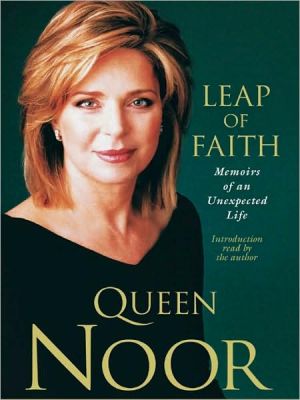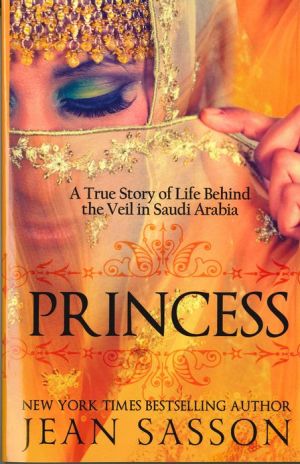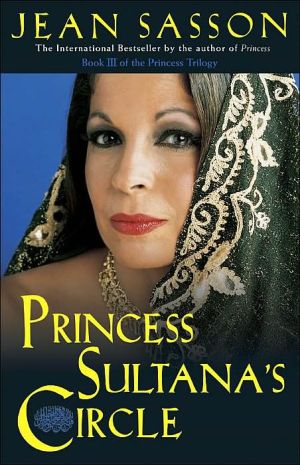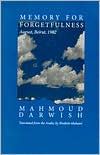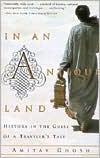Leap of Faith: Memoirs of an Unexpected Life
Leap of Faith is the dramatic and inspiring story of an American woman's remarkable journey into the heart of a man and his nation. Born into a distinguished Arab-American family and raised amid privilege, Lisa Halaby joined the first freshman class at Princeton to accept women, graduating in 1974 with a degree in architecture and urban planning. Two years later, while visiting her father in Jordan, she was casually introduced on the airport runway to King Hussein. Widely admired in the Arab...
Search in google:
Born in 1951 to a distinguished Arab-American family, Lisa Najeeb Halaby became the fourth wife of King Hussein at age 27. With her husband being not only Jordan's monarch but the spiritual leader of all Muslims, Lisa was unsure what her role would be. This moving memoir provides a timely look at one woman's story against a backdrop of 30 turbulent years: the displacement of over 1 million Palestinians by the creation of Israel, King Hussein's frustrated efforts for peace, and the effect of Saddam Hussein and the Gulf War on Jordan and the royal family. Queen Noor offers intimate new glimpses of King Hussein, Saddam Hussein, Queen Elizabeth, Arafat, and many other world leaders. New York Times Book Review Candid...an affecting wifely portrait of King Hussein.
LEAP OF FAITH\ Memoirs of an Unexpected Life \ \ By Queen Noor \ HYPERION\ Copyright © 2003 Her Majesty Queen Noor\ All right reserved. \ ISBN: 1-4013-5948-5 \ \ \ Chapter One\ First Impressions \ * * *\ I first met my future husband through the lens of a camera. I was standing with my father on the tarmac at the airport in Amman, Jordan, when King Hussein strolled over to greet us. Never one to hold back, my father thrust his camera into my hands. "Take my picture with the King," he said. Mortified, I nonetheless dutifully took the photograph, which caught the two men standing side by side, with the King's eldest daughter, Princess Alia, in the background. Afterward my father and the King exchanged a few words. Then King Hussein called his wife, Queen Alia, over to meet us.\ It was the winter of 1976, and my father had asked me to join him on a brief visit to Jordan, where he had been invited to attend a ceremony marking the acquisition of the country's first Boeing 747. My father, Najeeb Halaby, a former airline executive and head of the Federal Aviation Administration, was chairman of the International Advisory Board for the Jordanian airline. He was also in Amman laying the groundwork for a pan-Arab aviation university, an ambitious project aimed at reducing the region's dependence on foreign manpower and training. This undertaking, still in its infant stages, was the brainchild of King Hussein, my father, and other aviation dreamers in the Middle East. Since I was at loose ends, having recently completed a job in Tehran, I welcomed an opportunity to travel to Jordan, which I had visited briefly for the first time earlier that year. Another trip to this part of the Middle East would bring me back to the land of my ancestors and, I hoped, reconnect me with the Arab roots of my Halaby family.\ I distinctly recall my first impressions of Jordan. I had been en route to the United States from Iran, where I was working for a British urban planning firm. From the window of my aircraft, I had found myself spellbound by the serene expanse of desert landscape washed golden by the retreating sun at dusk. I was overwhelmed by an extraordinary sensation of belonging, an almost mystical sense of peace.\ It was spring, a magical season in Jordan, when the winter-browned hills and valleys turn green from the winter rains, and wild anemones spring from the earth like red polka dots. Oranges, bananas, strawberries, tomatoes, and lettuces were being sold along the road through the lush fields and orchards of the Jordan River Valley, and city families from the high, cool Amman Plateau were picnicking along the warm shores of the Dead Sea. There was a warmth and joy in everyone and everything I saw, and I was entranced by the delightful harmony of past and present, of sheep grazing in fields and empty lots adjacent to sophisticated office buildings and state-of-the-art hospitals. I remember in particular the sight of students walking in the open fields at the edge of Amman, textbooks in hand, completely absorbed in their studies for the Tawjihi, a general government exam that Jordanians must take in the final year of high school.\ I knew from looking at maps how close Jordan was to Israel and the occupied Palestinian territories, but I had not fully understood it until I stood on the Jordanian shore of the Dead Sea and looked across at the ancient city of Jericho on the occupied West Bank. Jordan, in fact, had a longer border with Israel than any other country; it ran some 400 miles from Lake Tiberius or the Sea of Galilee in the north to the Gulf of Aqaba in the south. Despite the enduring beauty of the landscape, World War II. three Arab-Israeli wars, and countless border skirmishes had left Jordan and Israel's cease-fire line-a sacred tract of land where the prophets once walked-riddled with land mines.\ My knowledge of Jordan then was limited to what I had read in newspapers or picked up in conversations, but I was aware of King Hussein's unique position in the region. He was a pan-Arabist with a deep understanding of Western culture, a consistent political moderate, and a dedicated member of the Nonaligned Movement. Jordan, I knew, was a linchpin for Middle East peace efforts, strategically located between Israel, Saudi Arabia, Syria, and Iraq. While in Jordan, I also learned that the King was a Hashimite-a direct descendant of the Prophet Muhammad, Peace Be Upon Him-and therefore held a special position of respect for Muslims.\ The Jordan I visited for the first time in early 1976 was a fascinating blend of modernity and tradition. The Emirate of Transjordan was founded in 1921 and became the independent Hashimite Kingdom of Jordan in 1946. The country had been transformed by King Abdullah, its founder, and then by his grandson, King Hussein, and had steadily developed into a modern state. Having lost its historic access through Palestine to the commercial seaports of the Mediterranean due to the creation of Israel, Jordan had developed Aqaba as a port for traffic on the Red Sea and beyond to the Indian Ocean.\ When I first came to know Jordan, the government was initiating an ambitious overhaul of the country's telecommunications. At the time it would take hours to call within Amman, and the capital did not even have international direct-dialing. Birds alighting on the system's copper wires could cut telephone connections, but soon there would be a state-of-the-art network of telephone services linking the country in even its most remote areas.\ Smooth new roads had been built, mostly from north to south, to complement the traditional trade routes west through Palestine. You could easily drive, as I did, from Jordan's northern border with Syria all the way to Aqaba on the modern Desert Road. Traveling through the desert I saw nomadic Bedouin tending to their livestock, and children darting in and out of the distinctive black goat-hair tents known as beit esh-sha'ar. As day faded into night, I was transfixed by the rosy golden glow of the setting sun on the rocky hillsides, where herds of sheep looked almost iridescent in the waning light of day.\ The Desert Road was the fastest and most direct road to the south, but my favorite route was the scenic Kings' Highway, which followed the ancient trade routes. The Three Wise Men are thought to have traveled at least part of the way to Bethlehem on the Kings' Highway, and Moses used it to lead his people toward Canaan. "We will stay on the Kings' Highway until we are out of your territory," reads Numbers 21:21-22 in the Bible, referring to Moses' request to King Sihon for permission to cross his kingdom, which was denied. Alternating between the two Nikon cameras I wore constantly around my neck, I took photograph after photograph of Mount Nebo, near where Moses is said to be buried, and of the magnificent mosaics I saw in nearby churches, just off the Kings' Highway.\ Earlier civilizations kept the dirt track cleared of stones to hasten the passage of donkeys and camel caravans laden with gold and spices, and the Romans paved sections of the Kings' Highway with cobblestones to allow travel by chariot. Evidence of ten thousand years of history is scattered along or near the Kings' Highway, from striking plaster neolithic statues with darkly lined eyes, the oldest representations of the human form, to the Iron Age capital of the Ammonites, Rabbat-Ammon, which forms the nucleus of Jordan's present-day capital, Amman.\ The archaeological treasures I saw in Jordan during this early visit were stunning, among them the classical walled city of Jerash in the hills of Gilead, with its colonnaded streets, temples, and theaters. Lakes once covered the eastern desert, where fossilized lions' teeth and elephants' tusks can be found in the sand. On the road to Baghdad loom the 1,300-year-old Islamic "Desert Castles" of the Umayyads-an Islamic dynasty established by the caliph Muawiyah I in 661 A.D.-with their colorful frescoes and mosaics of birds, animals, and fruits, and heated indoor baths.\ A few hours to the south lies the ancient Nabataean city of Petra, carved into multicolored sandstone cliffs. Hidden to the Western world for 700 years until Swiss explorer Johann Burckhardt stumbled on it in 1812, Petra is entered through a mile-long, narrow Siq, a natural gorge that cuts through the cliffs to emerge into a breathtaking marvel of shrines, temples, and tombs carved into the stone. It has a palette of natural colors and designs that no artist could duplicate, ancient caves and monuments whose floors and walls blaze with swirls of red, blue, yellow, purple, and gold veins of rock.\ On that first trip, I explored Amman on foot. Shepherds crossed the downtown streets with their flocks, herding them from one grassy area to another. They were such an ordinary part of life in Amman that no one honked or lost their patience waiting for the streets to clear; animals and their minders had the right of way. I wandered through the marketplace admiring the beautiful inlaid mother-of-pearl objects-frames, chests, and backgammon boards-as well as the cobalt blue, green, and amber vases known as Hebron glass.\ Amman looked classically Mediterranean with its white limestone buildings and villas ranging over and beyond the seven fabled hills that Ptolemaic King of Egypt, Ptolemy II Philadelphus had conquered in the third century B.C. In my room in the Inter-Continental Hotel, situated on a hill between two valleys, I lay awake each morning in the predawn stillness, listening to the call to early morning prayers, Al Fajr. I was completely captivated by the rhythmic sound of the muezzin calling to the faithful as it echoed off the surrounding hills. Jordan's capital was peaceful and calm, so different from the growing restiveness I had witnessed in the last months of my job in Tehran.\ On that fateful day when my father introduced me to King Hussein on the tarmac, a dense cluster of people surrounded the monarch: members of his family, the Royal Court, and government officials, including the CEO of the Jordanian airline, Ali Ghandour, an old friend of my father who had invited us to the ceremony. A lifelong aviator, the King was celebrating an exciting step forward for his beloved airline, which he considered a vital Jordanian link to the world. No doubt he simply longed to head for the cockpit of the country's first 747 and take off. Instead he was surrounded by courtiers, officials, guards, and family members. It was as if an invisible string were holding them all together; when the King moved, the entire group would sway with him.\ As I watched, I was struck by the way the King never lost his composure or his smile, despite the overwhelming noise and confusion. For many years I was reminded of that day at the airport by the photograph my father had asked me to take. During my engagement and after I married, I kept it in my office, still in the photo shop's simple paper frame. Sadly, it was lost more than a decade ago, when I asked to have a copy made. I keep hoping that it will fall out of a book or show up in a desk drawer; it is not often that one has a memento of the very first moments spent with someone who would become the most precious part of one's life.\ That short stay in Jordan ended with lunch at the King's seaside retreat in Aqaba, which had an appealing simplicity. Instead of living in an imposing vacation palace, the King and his family resided in a relatively modest beach house facing the sea; guests and other family members were housed in a series of small, double-suite bungalows that made up the rest of the royal compound.\ The King was traveling at the time but had asked Ali Ghandour to "take my good friend Najeeb to lunch in Aqaba." Over the mezzah, an assortment of appetizers including tabouleh, hummus, and marinated vegetables, the conversation veered quickly to politics-to Lebanon and its ongoing bloody civil war. I listened intently, asking many questions, fascinated by the complex political events of the region.\ Aqaba was a lovely spot, but our sojourn in Jordan was nearing its end. Soon I would be back in New York, hunting for a job in journalism. I never imagined that I would be returning to Jordan just three months later, nor did I have any inkling of how fateful that return would be. Perhaps I should have taken more seriously a curious prediction made on one of my last evenings in Tehran, just a few months earlier. At the end of a farewell dinner at a restaurant in the city center, an acquaintance at the table had told my fortune in the traditional Middle Eastern way, by reading my coffee cup. He swirled the thick grounds, turned over the cup, flipped it back, and studied the patterns within. "You will return to Arabia," he had predicted. "And you will marry someone highborn, an aristocrat from the land of your ancestors."\ (Continues...)\ \ \ \ \ Excerpted from LEAP OF FAITH by Queen Noor Copyright © 2003 by Her Majesty Queen Noor. Excerpted by permission.\ All rights reserved. No part of this excerpt may be reproduced or reprinted without permission in writing from the publisher.\ Excerpts are provided by Dial-A-Book Inc. solely for the personal use of visitors to this web site. \ \
Chapter 1First Impressions1Chapter 2Roots9Chapter 3Tehran Journal35Chapter 4An Audience with the King45Chapter 5A Leap of Faith79Chapter 6Honeymoon at Gleneagles105Chapter 7A Young Bride in the Royal Household127Chapter 8Pomp and Circumstance145Chapter 9One Crisis after Another155Chapter 10America through New Eyes189Chapter 11At Home and Abroad219Chapter 12"Women Hold Up Half the Sky"245Chapter 13Parenthood269Chapter 14Growing Pains289Chapter 15Prelude to War299Chapter 16Fire in the Gulf327Chapter 17Test of Faith337Chapter 18A Day Like No Other351Chapter 19The Edge of the Abyss383Chapter 20The White Bird399Chapter 21The Skies Cried423Epilogue437
\ From Barnes & NobleThe dramatic story of an emancipated young woman who became the fourth wife of a powerful Arab monarch, Leap of Faith is the intriguing autobiography of Jordan’s American-born Queen Noor. In it, the former Lisa Halaby discusses her late husband, King Hussein I (193599), and his tireless quest for peace in the Middle East; her conversion to Islam and her love for the people of Jordan; her difficult adjustment to royal life and her evolving role as a humanitarian activist; and her political and personal views on Islam and the West. This fascinating memoir provides a unique perspective on three eventful decades of world history and on relations between the United States and the Arab world.\ \ \ \ \ New York Times Book ReviewCandid...an affecting wifely portrait of King Hussein.\ \ \ Houston ChronicleQueen Noor has led a more interesting, committed life than the majority of authors writing their memoirs...it's hard to imagine a better story.\ \ \ \ \ USA TodayThe book's ending has real power. Hussein's death from lymphoma was a painful ordeal for him, his wife, his family and his small grieving country. \ Yet he conducted himself with kindness and concern for others to the end. If Queen Noor's object was to make the Arab world more human and understandable, she has succeeded. — Deirdre Donahue\ \ \ \ \ \ The New York TimesLeap of Faith will not dispel its author's impression that she has often been misunderstood. On one hand, this is a glossy and decorous account of the queen's unusual experiences, with a polite tendency to accentuate the positive. ("I urged everyone I worked with to speak freely and offer honest, constructive criticism.") On the other, it is a fiery account of her husband's frustrations in dealing with international diplomacy in general and the United States and Israel in particular. — Janet Maslin\ \ \ \ \ Publishers WeeklyAnyone who loved The King and I will readily warm to the love story of Queen Noor and the late King Hussein of Jordan. Born in America in 1951 as Lisa Halaby, Noor came from a wealthy, well-connected family and was part of Princeton's first co-ed class. Her father's aviation business produced a chance meeting with King Hussein in 1976, and a year or two later Noor realized the king was courting her. He was 41, she was 26. The rumor mills buzzed: was she the next Grace Kelly? Before long, the king renamed her Noor (light in Arabic), and she converted to Islam. They were married in the summer of 1978. From this point on, her story is mostly his, mainly covering his attempts to broker peace in the Middle East. There are meetings with Arafat, Saddam Hussein, American presidents and other leaders. Noor details Hussein's struggles to create Arab unity and his vision of peaceful coexistence with Israel. Her own activities developing village-based economic self-sufficiency projects and improving Jordan's medical, educational and cultural facilities take second place to her husband's struggles on the world stage. And while she occasionally acknowledges her domestic difficulties, Noor is careful not to allow personal problems to become any more than asides. Her pleasing memoir ends with the king's death after his struggle with cancer, although readers may suspect that this smart, courageous woman will remain a world presence for years to come. (On sale Mar. 18) Forecast: The legions of royalty fans will clamor for this long-awaited memoir, and with the queen's appearances on Good Morning America and Larry King Live, an excerpt in this month's Vogue and ubiquitous reviews, it should draw readers. Copyright 2003 Reed Business Information.\ \ \ \ \ Library JournalWe love stories about princesses. This particular royal tale is true and shows that being a contemporary princess (or queen) involves a tremendous amount of responsibility and not a little loneliness. Of Jordanian and Swedish descent, American-born and Princeton-educated Lisa Najeeb Halaby was 26 years old when she became the fourth wife of Jordan's King Hussein in 1978. Upon her conversion to Islam he chose Noor Al Hussein as her Arabic name, meaning "Light of Hussein." The Arab-Israeli conflict and Hussein's efforts at peacemaking are a large part of this work, part love story, part political commentary, told naturally from the Jordanian side. Hussein's stance estranged him at times from other Arabs (in particular Egyptians) as well as from Israelis, a point Noor emphasizes perhaps to make him more appealing to American readers. In addition to raising their four children (and his eight from previous marriages) and traveling with her husband, she chaired the board of the Noor Al Hussein Foundation, which promotes culture and development in Jordan, with an emphasis on women's issues. She now works with the International Campaign to Ban Landmines. Noor ably reads the introduction, but the rest of the book is narrated by Suzanne Toren, whose precise, cultured tone is exactly what we expect from a queen.-Nann Blaine Hilyard, Zion-Benton P.L., IL Copyright 2003 Reed Business Information.\ \
